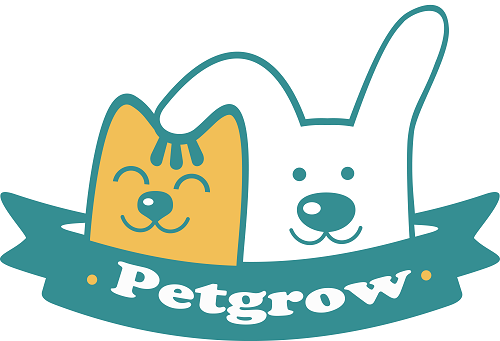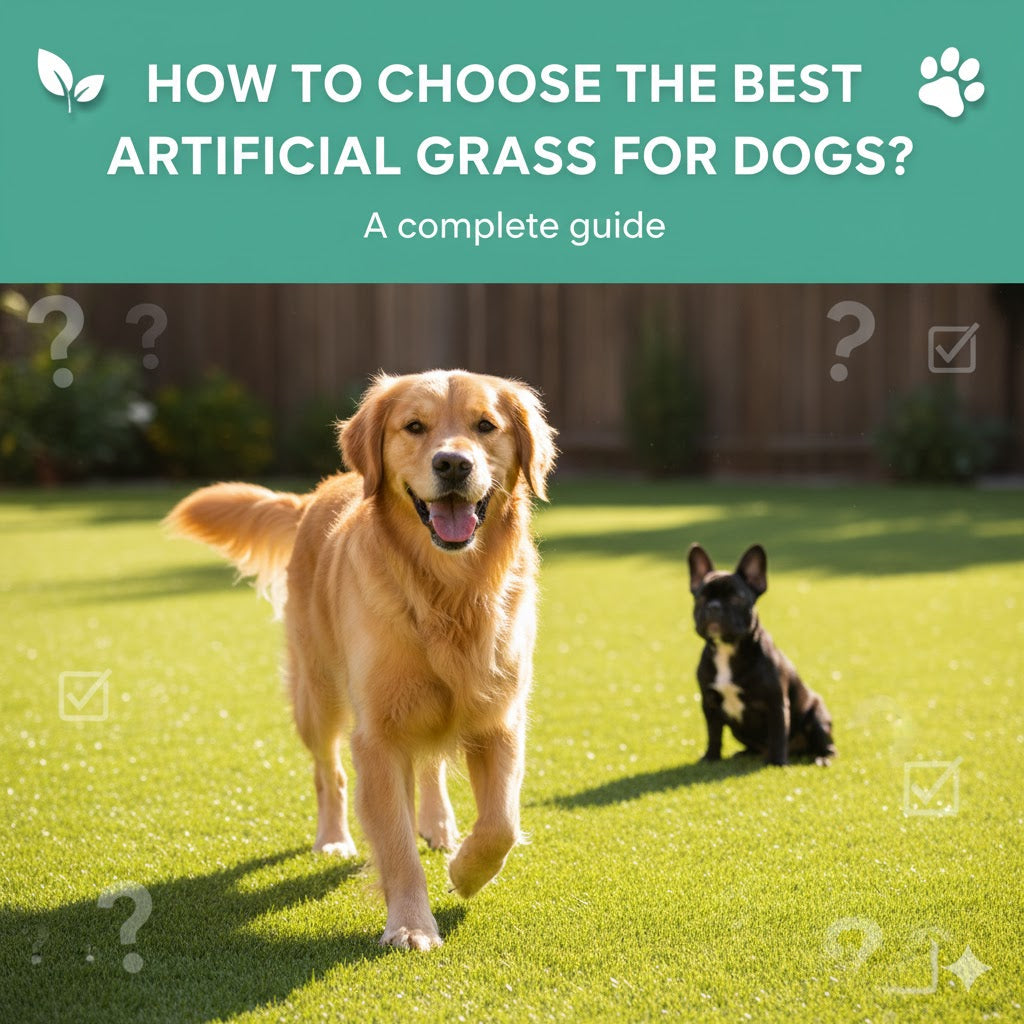If you have a dog, you know how fast a nice yard can turn messy. One rainy day or a few pee spots, and your green grass becomes brown and muddy. Cleaning paws and fixing bald spots never seems to end.
Many dog parents now choose trusted brands like PetGrow, known for durable and safe pet turf that looks natural year-round.
In this complete guide, we’ll walk through how to pick the best turf for your dog. You’ll learn what features matter most, how to install it right, and how to keep it clean and safe for daily play.
Why Not Just Use Natural Grass?
Natural grass looks nice at first, but it doesn’t stay that way for long when dogs use it every day. Urine burns the blades and leaves yellow patches that never seem to heal. Rain turns the ground into mud, and paws carry that mud back into your home.
Dogs also love to dig. A single hole can ruin your lawn and make it unsafe for play. Over time, keeping a natural lawn healthy costs money and effort watering, mowing, and reseeding again and again.
That’s why many dog owners move to artificial grass for dogs. It doesn’t die from urine, handles rough play, and keeps your yard green all year. It gives you the clean look of a healthy lawn without the hard work.
Key Terminology & What Matters
Before you buy, it helps to understand the words you’ll see in product details. These terms tell you how strong, safe, and long-lasting your turf will be.
Yarn type is the fiber used to make the fake grass. Most artificial grass for dogs uses soft polyethylene. It feels gentle on paws and is easy to clean. Some products mix in polypropylene or nylon for extra strength.
Pile height means how tall the blades are. Shorter piles, around one inch, are easier to clean and don’t trap odors. Taller blades look lush but can flatten faster under paws.
Density or face weight measures how thick the turf is. High-density turf stands up better to daily play and digging.
The thatch layer is the curly fiber at the base. It supports the blades and gives a more natural grass look.
The backing system is the base that holds everything together. Look for perforated backing or flow-through drainage holes so urine and rain can drain fast.
Finally, check for UV resistance. Sunlight can fade turf over time, so choose one with UV-resistant polyethylene or ultraviolet inhibitors to protect color and texture.

Top 5 Features to Look for in Artificial Grass for Dogs
When choosing artificial grass for dogs, the right features make all the difference. A good product keeps your yard clean, dry, and safe for play. Here are the five key things to check before you buy.
1. Drainage and Backing System
Fast drainage is the most important feature. Dog urine must pass through the turf quickly to avoid bad smells and bacteria.
Look for perforated backing or a flow-through backing system with many drainage holes. These allow water and urine to move straight down into the base. Avoid turf that only has a few holes—it will trap moisture and odor.
2. Pile Height and Density
A shorter pile, around one to one and a quarter inches, works best for pets. It’s easier to rinse and keeps waste from getting stuck. Choose turf with high-density yarns so it can handle daily running and digging without flattening.
3. Safe and Strong Materials
Soft UV-resistant polyethylene is a great choice. It feels gentle on paws but stands up to sunlight and play. Some products also use polypropylene yarns for extra strength. Make sure the turf is non-toxic and lead-free. You don’t want your dog licking harmful chemicals.
4. Odor and Bacteria Control
Good turf fights smell and germs. Some brands use antimicrobial infill to stop bacteria growth and urine odor. You can also use special sand infill with Microban or zinc treatment. These materials keep the play area fresh and safe even after heavy use.
5. Heat and UV Resistance
In hot weather, turf can heat up fast. Pick one with UV resistance and reflective technology to keep it cooler.
Some pet turfs also include shock pad layers to reduce heat transfer and protect your dog’s joints while playing.
Pros & Cons (Tradeoffs)
Every yard choice has good and bad sides. Artificial grass for dogs is no different. Knowing both helps you decide if it’s right for your home.
Pros:
Artificial turf stays green all year. There’s no mud, no watering, and no mowing. It handles digging, running, and rough play without turning into a mess. You can clean it fast with a quick rinse. It also saves water and keeps your home free from muddy paw prints.
Cons:
Turf can get hot in strong sunlight, so dogs may need shade or cool water rinses. It costs more upfront than natural grass, though it saves money later on care. If you skip cleaning or use poor drainage, urine smells can build up.
How to Size & Plan for Your Dog / Yard
Before buying artificial grass for dogs, plan your space. The right layout makes it easier to install and maintain.
Start by measuring your lawn size. Use a tape measure to find the length and width, then multiply to get total square feet. Knowing the exact size helps you order the right roll width and amount of turf.
If you have more than one dog, plan a bigger play area. Give them space to run and rest. A small yard can still work well, just focus on high-quality turf that drains fast and cleans easily.
You can also create a potty zone or use grass patches for bathroom breaks. This keeps the main lawn clean. Apartment owners can try smaller setups like a lawn tray or grass pee pad for balconies.

Installation Steps & Checklist
Installing artificial grass for dogs takes some work, but the steps are simple once you plan it out. A good setup means better drainage, less odor, and a longer life for your turf.
Step 1: Clear the area
Remove old natural grass, rocks, or roots. Clean the ground so it’s flat and smooth.
Step 2: Add the base
Spread 3–4 inches of crushed stone or gravel. This layer lets water flow and stops puddles. Compact it with a roller or tamper until it’s firm.
Step 3: Lay the drainage layer
If your space floods easily, add a thin Flex mat or drainage sheet. It helps water pass through faster and reduces odor buildup.
Step 4: Roll out the turf
Lay the turf in one direction to keep the blades looking natural. Trim the edges to fit your yard shape.
Step 5: Secure the seams and edges
Join pieces with turf tape and glue or strong outdoor staples. Leave small edge gaps so water can drain out.
Step 6: Add infill and brush the turf
Spread antimicrobial infill evenly, then brush against the grain to lift the blades. This helps with drainage, odor control, and softness.
Step 7: Test drainage
Rinse the area with a watering hose. Make sure water flows through the drainage holes quickly. If not, fix the base before your dog starts using it.
Maintenance & Odor Control
Good care keeps your artificial grass for dogs fresh and clean. It doesn’t take long, but staying consistent makes all the difference.
- Daily care: Pick up solid waste right away. Use disposable gloves or a poop bag. Don’t hose it into the turf.
- Weekly rinse: Spray the turf with a watering hose to wash away dust and urine. This keeps smells low and blades upright.
- Monthly deep clean: Use an enzyme-based cleaner made for pet turf. These break down urine odor and stop bacteria growth. Spray, let it sit for a few minutes, then rinse well. You can also use a mix of vinegar and water if you prefer a natural option.
- Seasonal check: Add more infill if needed and brush the blades with a stiff broom. Look for clogged drainage holes or edges where water pools. Clean them to keep flow strong.
- Hot weather tip: Turf can get warm in full sun. Rinse it before play to cool it down. This protects your dog’s paws and keeps the play area comfortable.
Frequently Asked Questions (FAQs)
1. Is artificial grass for dogs safe?
Yes. Most brands use non-toxic, lead-free materials. Always check the label before buying. Avoid turf with crumb rubber infill.
2. Will the turf get too hot for my dog’s paws?
It can on very sunny days. Rinse it with water or give your dog shaded breaks. Turf with UV resistance or reflective coating stays cooler.
3. Can I install it on concrete or a patio?
Yes. Use a thin shock pad or drainage mat under it. This lets water pass through and keeps paws comfortable.
4. How long does pet turf last?
Good artificial turf can last 10–15 years with proper care. Heavy use areas may need new infill or brushing sooner.
5. How do I stop urine odor?
Rinse often and use enzyme cleaners. Add antimicrobial infill to stop smell and bacteria growth before it starts.
Conclusion
Choosing the right artificial grass for dogs makes life easier for you and your pet. It keeps your yard clean, green, and ready for play every day.
Focus on drainage, odor control, and safe materials. These features matter more than looks alone. With the right setup and simple cleaning, your turf can last for many years.
If you’re ready to switch to a low-maintenance yard, contact PetGrow. Their artificial grass for dogs combines comfort, durability, and great value.


Share:
What does an artificial grass warranty actually cover?
Which artificial grass accessories do I actually need?